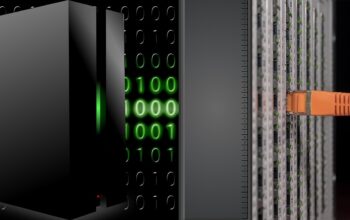Cybersecurity Code Crackers: Uncovering the Top Programming Languages
Imagine a world where digital spies lurk in every corner of the internet, waiting to strike. In this world, cybersecurity experts are the heroes, using programming languages as their superpowers. Let’s explore the top programming languages that help keep the digital world safe.
Why Are Programming Languages Important in Cybersecurity?
Think of programming languages as versatile tools in a cybersecurity expert’s toolbox. Each language serves a specific purpose, from identifying threats to protecting networks. The choice of language depends on the task at hand, whether it’s automating security processes or developing robust security systems.
1. Python: The Versatile Hero
Python is like a Swiss Army knife for cybersecurity professionals. It’s easy to learn, powerful, and can be used for almost anything. Whether it’s analyzing malware, automating tasks, or performing network scans, Python is the go-to language. Imagine a security team using Python to create a script that can detect anomalies in network logs, helping them catch potential threats before they become problems. Python’s power is also seen in penetration testing frameworks like Scapy, which allows for packet manipulation and network scanning.
Example Application: A cybersecurity team uses Python to automate log analysis, identifying patterns that might signal a security breach. This helps them respond quickly to threats.
2. Java: The Web and Enterprise Guardian
Java is known for its robustness and is widely used in web and enterprise security. It’s like a strong fortress, protecting data and systems from unauthorized access. Java is crucial for developing secure applications and systems, ensuring that they can withstand attacks. It’s also used in Android app development, making it a key player in mobile security.
Example Application: Companies use Java to develop secure web applications, ensuring that user data remains safe and encrypted.
3. C/C++: The System-Level Wizards
C and C++ are the low-level languages that build the foundation of cybersecurity. They’re like the master builders, constructing systems and applications from the ground up. These languages are essential for developing operating systems, firmware, and applications that require direct hardware manipulation. They’re the backbone of secure systems, ensuring that vulnerabilities are minimized at the core level.
Example Application: Companies developing operating systems use C/C++ to ensure that their systems are secure right from the start.
4. JavaScript: The Web Security Specialist
JavaScript is the web’s powerhouse, used for both front-end and back-end development. It’s like a shield, protecting web applications from client-side attacks. As web security expands, JavaScript’s role becomes more critical, especially in server-side security. Frameworks like Node.js allow developers to create scalable web applications that are secure and fast.
Example Application: Developers use JavaScript to create secure web applications that can handle thousands of requests without compromising user data.
5. PowerShell: The Windows Wizard
PowerShell is Microsoft’s magical wand for Windows environments. It’s like a superpower that automates tasks and manages security settings with ease. While it’s mostly limited to Windows, its impact is significant within those environments. PowerShell scripts can automate security tasks, making it a crucial tool for Windows security teams.
Example Application: A security team uses PowerShell to automate tasks like updating security patches across a network of Windows machines.
Conclusion
In the world of cybersecurity, programming languages are the unsung heroes. Each language brings its unique strengths to the battlefield, from Python’s versatility to C/C++’s system-level power. As cybersecurity threats evolve, these languages will continue to play a vital role in protecting our digital landscape.
References:
- https://destcert.com/resources/best-programming-languages-for-cybersecurity/
- https://metana.io/blog/best-programming-language-to-learn/
- https://www.youtube.com/watch?v=4uSHylb4BqI
- https://www.instagram.com/reel/DKKHQRDs7Kr/
- https://www.splashtop.com/blog/cybersecurity-trends-and-predictions-2024
- https://www.stationx.net/top-10-programming-languages-for-cyber-security/
- https://www.securecodewarrior.com/blog
- https://www.prompt.security/blog/prompt-security-ai-security-predictions-for-2025



